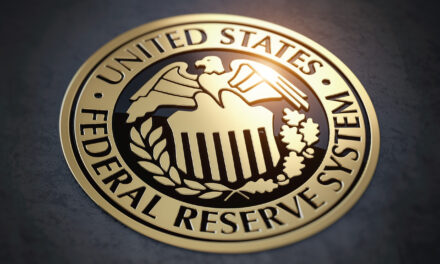The global economy is slowing, and many countries have lowered interest rates — even into the negatives in some cases — which is creating a new problem for central banks to solve.
Governments around the world could provide some solutions through fiscal programs or policies that could improve growth and raise interest rates, but more is being left up to central banks as geopolitical issues take the main stage like the ongoing Brexit ordeal and the U.S.-China trade war that has dragged on for over a year.
Global financial officials including the International Monetary Fund and the World Bank met at the end of last week to discuss what could be done about the worsening global economy. Haruhiko Kuroda, governor of the Bank of Japan, argued “we still have tools which could be used as necessary,” according to Reuters.
“I don’t think the effect of monetary policy has declined significantly or materially,” he continued.
But he warned countries “have to be careful” when considering the effects prolonged low interest rates could have on a financial system. Japan, along with the EU, is currently dealing with negative interest rates. And many other countries, including the U.S., are trending in that direction as well.
Stanley Fischer, former vice chair at the Federal Reserve, thinks it’s time to make it easier for governments to step in.
“We have got to make it easier for politicians to run fiscal policy when monetary policy is essentially not operating well,” Fischer, who is now a senior adviser at BlackRock, said.
Fitch Ratings Chief Economist Brian Coulton also thinks central banks are losing the power needed to offset ongoing global events that are impacting the economy.
“There is a kind of benign view that central banks are just kind of doing their best to offset the damage done by one set of policymakers in one side of the government,” he said. “There is a real danger in misplaced faith in the capacity of central banks to fix all these growth challenges.”
But central banks may be trapped, and they’re running out of tools to dig their respective economies out. Per Reuters:
With interest rates close to or below zero, asset purchases are now the main policy tool for some central banks. The European Cental Bank, for example, has cut its key rate to a record low of minus 0.5% and launched an indefinite bond buying program that will likely keep it in the market for years to come.
Outgoing ECB President Mario Draghi said “the risks surrounding the euro area growth outlook remain tilted to the downside” during the IMF meeting Friday. “The Governing Council continues to stand ready to adjust all of its instruments.”
One danger of lower interest rates is it accommodates investors who are willing to take risks in the hunt for yields, which drives bonds into the negatives.
“We do worry about the side effect, which is that investors are reaching for yield,” the IMF’s Tobias Adrian said. “That is ultimately what is driving high yield bonds into negative territory in some parts of the world.”
He pointed to stretched valuations the IMF has spotted in some equity markets and bond markets around the world.
The governor of Iceland’s central bank, Ásgeir Jónsson, said that negative interest rates could be hiding deeper problems, and he went on to call them a “sign of sickness for developed economies.”




